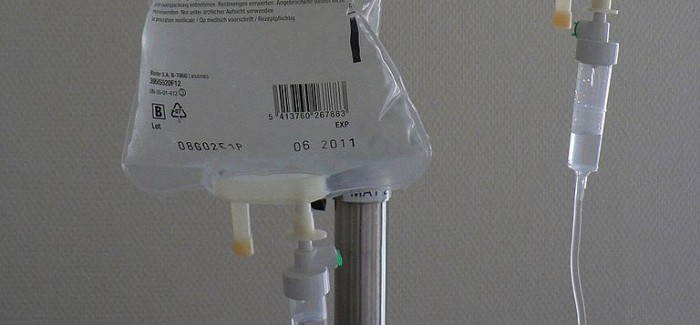Lactated ringers vs. normal saline – when you read this, what comes to your mind? After much thought many will still be blank and some might just say they are clear fluids used to treat diseases. That might be true, but very vague. Read on to get a clear understanding of them.
Lactated Ringers vs. Normal Saline
Lactated ringers and normal saline are both crystalloid solutions that have been used for years. But there has been controversy over which one is superior to the other and many google "lactated ringers vs normal saline" on the internet, trying to find an answer. I bet through the following comparison you will know them better.
1. Definition
Lactated Ringers: Lactated ringer is an electrolyte replenishment as well a sterile solution. The year 1971 is when Ringer's solution was approved to be put in plastic containers by the FDA. This solution is found in 1000 ml, 500 ml and 250 ml plastic containers. It is prescribed and has generic versions.
Normal Saline: Normal saline (NS, NSS or N/S) is basically sodium chloride. It is a fluid injected into the body to replenish electrolytes. Its generic versions are also available. Normal saline is a phrase used to generally refer to a solution of 0.90% w/v of sodium chloride, 308 mOsm/L or 9.0 g per liter. Normal saline also works as an antiseptic.

2. Function
Lactated ringers restore electrolytes and fluid balances, reduce acidity and produce diuresis.
Normal saline is a source of electrolytes and water. When hypovolemia is serious, threatening blood circulation, normal saline is administered. For years, it has been deemed as the safest solution to administer in large quantities at once.
3. Dosage
If you want to get a full picture of lactated ringers vs. normal saline, then you have to know their dosage and other related information.
Lactated Ringers:
The dosage of lactated ringer for an adult is as directed by the doctor, depending on the weight, age, current treatment and medical condition of each individual. Bear in mind that ceftriaxone (Rocephin) should not be used together with lactated ringers for the risk of calcium and ceftriaxone precipitation. Besides, safe use of lactated ringers solution on pregnant women is yet to be determined. And there has not been adequate evaluation on the use of the solution by nursing mothers.
Normal Saline:
Normal saline dosage depends on weight, age, medical conditions of the patient and the lab results. It interacts with corticotropin and corticosteroids. Ensure that your medical practitioner is aware of all dugs and supplements you are on. In cases of pregnancy, normal saline should be used only when prescribed. It is not known if the solution goes through to breast milk. To be safe, consult your doctor before breastfeeding.
4. How to Apply
Lactated Ringers:
The injections are meant for intravenous administration via nonpyrogenic and sterile equipment. Before administration, the container holding the solution should be sealed. Once the container is opened, the solution cannot be stored for later use. The solution should be clear without precipitate or discoloration before use. In case an additive is present, the solution should be well mixed with an aseptic technique. Compatibility of the additives should first be checked before addition by reading the relevant literature.
Normal Saline:
It is used to flush skin abrasions and wounds. It is also intravenously administered to rehydrate and supply additional water and salt for patients who are not able to take them by mouth. Normal saline solution might have osmotic problems. Therefore, for intravenous administration, the salt concentration should be reduced by adding glucose. The concentration of the saline, however, is determined by the condition of the patient. Normal saline can also be used to treat some symptoms of common cold.
5. Side Effects
Lactated ringers and normal saline's side effects are also great parts in the lactated ringer vs. normal saline comparison:
Lactated Ringers:
Known side effects include chest pain, decreased blood pressure, sneezing, coughing, itching, difficulty breathing, infection at site of injection, extravasation, venous thrombosis and hypervolemia.
Normal Saline:
Known side effects include febrile response, venous thrombosis, infection at the site of injection, hypervolemia and extravasation.
6. PH
Lactated Ringers: pH is around 6.5
Normal Saline: pH is around 5.0 (4.5-7.0)
